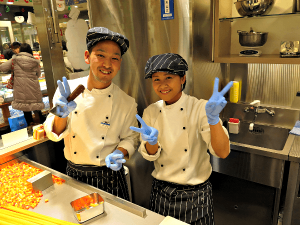Six Ajuua’s Mexican Restaurant employees have tested positive for salmonella, but officials do not know if they contracted the infection before or after the outbreak was caught by Ector County health officials.
 Ector County Health Department Director Gino Solla said the tests for the six employees came to the department Monday, and the number of lab-confirmed tests has increased to 10 since the outbreak was confirmed on June 6. The number of probable cases, he added, was now at 23.
Ector County Health Department Director Gino Solla said the tests for the six employees came to the department Monday, and the number of lab-confirmed tests has increased to 10 since the outbreak was confirmed on June 6. The number of probable cases, he added, was now at 23.
Those six employees have not been interviewed by the health department, Solla said, adding that when they do, it was unlikely they would confess to carrying the infection while working. Solla added to see if those employees got sick from the food, they would have to test the food that has already been thrown out.
“Common sense tells us no employee is going to say ‘I was sick,’ ” Solla said. “It’s very unlikely they’re going to fess up.”
Julian Rubio, CEO for Ajuua’s, said the six employees who tested positive do not reflect on the cleanliness of the restaurant, referring to the 97 and 100 restaurant report scores Ajuua’s got on Feb. 4 and April 13 respectively.
Rubio also said he was surprised to have six employees test positive.
“These employees never mentioned any signs of being sick or having any symptoms,” Rubio said. “We thought we were going to get everyone back negative.”
Of those 10 lab-confirmed cases, five are men and the other five are women, with an age range between 36 and 84 years old, Solla said. For the probable cases, 13 are men, seven are women and three are unknown, he added.


.jpeg) dined at Cebolla’s Mexican Grill at 5930 W. Jefferson Blvd. in Time Corners on March 25.
dined at Cebolla’s Mexican Grill at 5930 W. Jefferson Blvd. in Time Corners on March 25. They sure do.
They sure do. had just published a book at a time when people thought that science had very little to do with cooking, setting Blumenthal on what was to become his mission in life – using science to create his now famous culinary masterpieces.
had just published a book at a time when people thought that science had very little to do with cooking, setting Blumenthal on what was to become his mission in life – using science to create his now famous culinary masterpieces. The venerable
The venerable